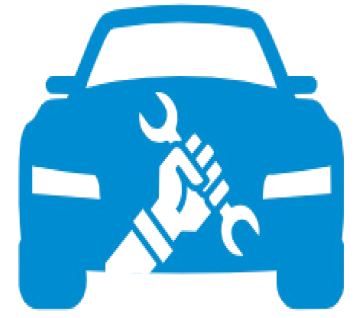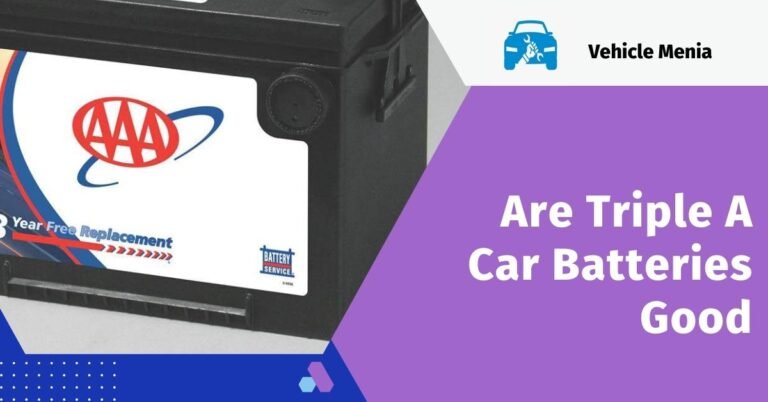What happens if the battery is reversed? Connecting a battery backwards is a fire hazard, as it can cause specific components to catch fire and create smoke. This is why you should immediately disconnect your battery as soon as you realize that the terminals are incorrectly connected.
Table of Contents
When Reverse Polarity On A Car Battery Happens
If you connect your vehicle’s battery cables to the wrong terminals, you will create all sorts of problems. Basically, reverse polarity on a car battery happens whenever positive and negative terminals have been misconnected, which often leads to electrical system malfunctions.
Pro Tip: Also, if a battery were drained all the way to being dead and someone hooked up the charger backwards and charged it back up that way, even connecting that battery the right way can cause the same kind of damage as connecting a battery backwards.Specific Effects on Vehicle Components
It also provides a positive charge to the other end of a device’s circuit, which normally hooks up to the said battery’s negative terminal when installed in reverse. This is usually used as a ground source for many vehicle-born electronics and devices.
If you are hooking up the battery backwards, you will generally get a welding machine-grade spark when you make your final connection. If this happens, you must stop making that connection and hope you didn’t destroy anything.
They say that the diodes in the alternator might feel the surge before anything else does. Still, today’s vehicles are loaded with two dozen or more modules that are easily destroyed this way, so watch what you are doing and don’t connect the battery backwards.
Note: Never, under any circumstances, do any work around a car battery without wearing eye protection.

Symptoms of reverse battery connection
No Start Condition: The car may crank but not start due to damaged ignition components or sensors.
Electrical Malfunctions: You may notice flickering lights, non-functioning accessories (like the radio or power windows), and strange noises from relays or other electrical components.
Burning Smell or Smoke: Indicates severe damage to electrical components.
Unusual Sounds: Clicking or ticking sounds from relays or other components.
The Consequences of Connecting Car Batteries Backwards
So, you’ve connected the battery backward, and the car won’t start. As mentioned above, connecting a car battery backward can damage various components.
What happens if you put a car battery in backward? This will immediately destroy the PCM, several fuses and relays, and wiring not rated for high-voltage circuits. It can also destroy an alternator and even some sensors. The battery itself might also fizz out and leak toxic acid.
Don’t think about reconnecting your battery correctly; I hope nothing was damaged. If any damage occurs, you could potentially worsen it by reconnecting your battery.
What Should You Do If You Connect a Car Battery Backwards?
How to fix a car battery connected backwards? Well, if you wonder what would happen if you hooked up a car battery backward, then there would be tons of bad things. If you feel that you have just made a fatal mistake and your battery is connected backward, then do these steps:
Note: If it won't start, have somebody tow it to a shop. You will most likely not be able to fix whatever is wrong on your own, but you may want to try to follow the steps below first.Take Out Your Keys From the Ignition of Your Vehicle
You will also have to make sure that the engine is inactive. This will liven up only if you disconnect the battery. The right point to begin would be to disconnect the cable that’s on the negative terminal to avoid causing potential damage to your vehicle’s electrical system; you will then be good to take out the positive terminal. Remember that you should not waste any time, as merely letting the battery run will continue to damage your vehicle’s electronics irreparably.

Inspect Wiring, Fuses, and Relays
Connecting a battery backward is a fire hazard because some of the components it is between will catch on fire or start smoking. Therefore, if you realize your terminals have been connected wrongly, you should disconnect your battery immediately. Otherwise, you will be applying high-voltage currents to sensitive components.
You should also visually inspect the engine compartment for visible wiring harnesses with signs of damage, such as burnt wires and melted insulation. When wires melt or burn, smoke and a burning smell often exist.
After that, run through your vehicle electronics. There is a fuse or relay box for every vehicle. Usually, you find two of them, one under the dashboard and another under the hood. Check with the vehicle’s manual for each box’s exact position. From here, you must check whether the fuses and relays remain intact.
The wiring harnesses of a vehicle do have a fusible link, actually, a wire that works in the same fashion as a fuse to protect the circuits in case of a short circuit. Usually, these fusible links blow out when a battery is inserted incorrectly. The vehicle’s alternator will normally short out as well.
Test the Powertrain Control Module
In some cases, the PCM itself gets damaged. If that’s the case, you can hook up a scan tool and pull trouble codes to help you pinpoint your problem. Sometimes, even a scan tool won’t work if your PCM is damaged. You may need to mail it out for testing and repair; without the proper equipment, it cannot be checked locally.
Alternatively, it might need to be replaced, which will be expensive.
If any of the components mentioned above have been shorted, you must replace or repair it. Otherwise, faulty relays and fuses will stop some vehicle electronics from working, including the fuel pump and starter. Computers such as the PCM form part of a vehicle. Without it, the engine won’t run.
A shorted alternator will prevent your vehicle’s battery from charging properly, so you will also have to diagnose and fix this.
Overall, the accidental insertion of a battery backward has many effects on your vehicle. If you are lucky, that may just result in a blown fuse without anything else. Otherwise, components that are rather very expensive to replace, such as the alternator and PCM, would have to be replaced in scenarios involving the worst situations.
Preventing Future Mistakes
Double-check connections: Always ensure the positive terminal connects to the positive post and the negative to the negative post.
Use Color-Coded Cables: This reduces the risk of confusion during battery installation.
Follow the Vehicle’s Manual: Refer to the manual for correct battery installation procedures.
Related Questions:
What Happens If You Connect Car Battery Terminals Wrong?
These fusible links will normally blow when a battery is inserted upside down. The vehicle’s alternator will also normally short circuit. If this happens, some vehicle manufacturers have a fuse designed to protect all other devices.
Car Battery Backwards Damage
The PCM, several fuses and relays, and wiring not rated for high-voltage circuits can be immediately damaged. This may damage the alternator and some sensors. The battery itself might also fizz out and leak toxic acid.
Can A Car Battery Explode If Connected Backwards?
The batteries vent flammable hydrogen gas. Reversing the battery cables will cause a potential spark to ignite this gas and set off an explosion.
What Happens If You Connect Positive To Negative On A Car Battery?
When positive to negative on a charger for a battery is connected, it can produce a spark and even start an electrical fire. By definition, batteries have two different types of liquid inside them.
Are There Safety Devices To Prevent This From Happening?
Some vehicles have protective fuses to prevent extensive damage, but it’s always best to manually double-check connections.
Can A Reversed Battery Connection Permanently Damage My Car?
Yes, it can cause permanent damage to sensitive electronic components, which may require costly repairs.
Conclusion
If you insert a battery backwards by mistake, the implications for your car could be severe. If you are lucky, you will blow a fuse and nothing else, but this rarely happens. After connecting a battery backwards, you must examine components, such as the powertrain control module and alternator, as well as your vehicle’s fuses and relays, for damage. If you need to fix or replace all of the damaged components to continue driving your vehicle, you will need to find all of them. This is a tall order for any DIY mechanic, so we recommend that you try this only if you are trained for such tasks.






